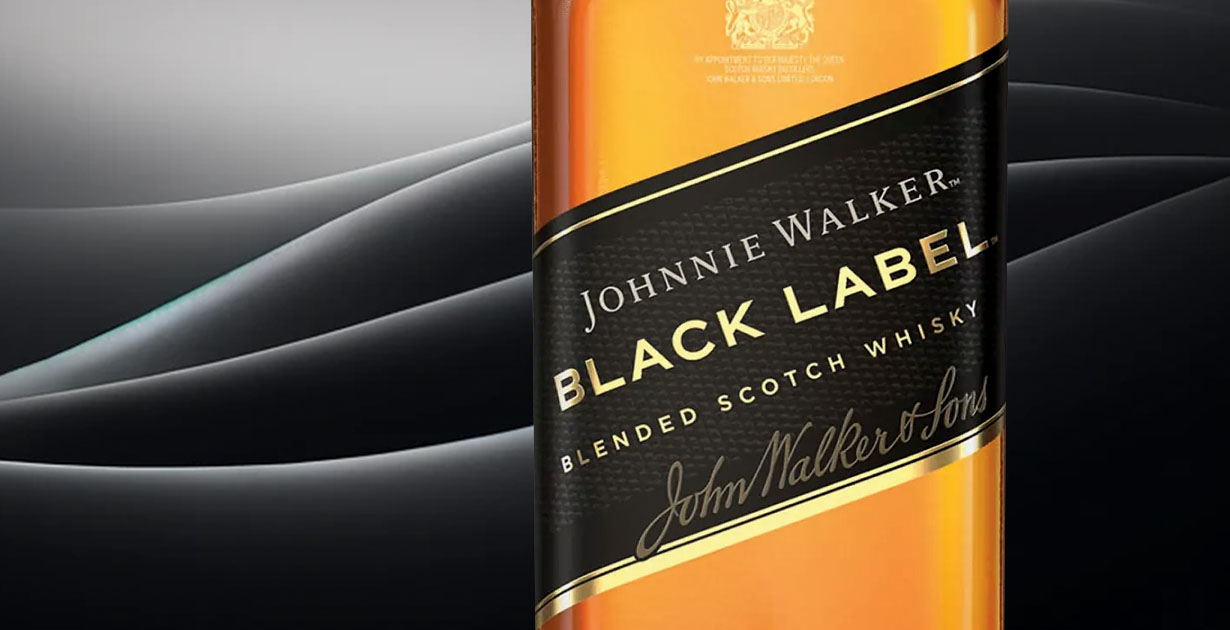
It’s one of the most recognisable bottles on the shelf, sleek, slanted label, bold gold type, and that unmistakable name: Black Label. But have you ever wondered why it’s called that? Why not “12-Year-Old Deluxe” or “Walker’s Finest”?
The answer, as it turns out, is rooted not just in colour, but in clever marketing, practical branding, and a bit of whisky history that dates back over a century. Before the rainbow of Johnnie Walker labels we know today, there was just Red and Black, two simple colours that changed the way the world thought about scotch.
A Colourful Rebrand For Johnnie Walker
By the turn of the 20th century, Johnnie Walker was already exporting whisky well beyond Scotland. But its flagship blends carried rather formal names, “Old Highland” and “Extra Special Old Highland.” These names weren’t that explanatory, or particularly memorable, to an international audience. Interestingly, drinkers had started referring to the bottles by the colour of their labels instead. It was informal, intuitive, and, crucially, it worked.
In 1909, the Walker family made the smart decision to embrace this. They rebranded their two main expressions as Red Label and Black Label, transforming a customer habit into a branding triumph. Colour gave the whiskies instant recognition across languages and cultures. Red and Black weren’t just eye-catching, they became shorthand for style, strength, and identity.
What “Black” Really Meant
The decision to call it Black Label was about more than just packaging. In contrast to the lighter, more accessible Red Label, designed for mixing and built around a younger, punchier style, Black Label was intended to offer something more refined. A 12-year-old blend, it was deeper, fuller, and altogether more suited to slow sipping than soda water.
Before the colour rebrand, it had gone by the rather unwieldy name “Extra Special Old Highland.” The move to Johnnie Walker Black gave it clarity and confidence. It suggested something serious, something layered. And in doing so, it set a precedent: that colour alone could communicate character, age, and even occasion.

Jonnie Walker And The Birth of a System
Red and Black weren’t just successful, they laid the foundation for a new way of thinking about whisky. The idea that colour alone could define character caught on quickly. Other shades followed in time: Green, Gold, Blue, each one signalling a step up in age, flavour, or rarity. Even the more recent Double Black and Platinum built on the original 1909 logic.
Not every experiment endured. A short-lived White Label was introduced but quietly dropped—in part due to a legal clash with Dewar’s similarly named expression. But the framework was already in place. With Red and Black, Johnnie Walker had created more than a pair of whiskies, they had established a visual language that still speaks clearly today.
Why It’s Black
So why is Johnnie Walker Black Label… black? The answer lies in a mix of pragmatism, perception, and a touch of brilliance. It was never just about colour for colour’s sake, it was about giving shape to a blend that deserved distinction. Just the visual effect of a colour became a signifier of depth, maturity, and balance, all without saying a word.
More than a century later, that single word still carries weight. It reminds us that sometimes, the simplest ideas, like a change of label, can define an entire legacy.
Read the full article at Why Is Johnnie Walker Black Label… Black?
